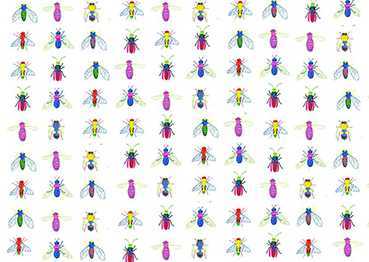

This interdisciplinary study explores the fascinating world of insects to help us design cities that are more respectful of the environment and better adapted to climate change. In other words, it represents a tool for promoting biodiversity in urban environments. According to scientists, the two main causes of insect decline in Europe and Switzerland are the fragmentation (destruction) of habitats and the use of phytosanitary products. Fortunately, efforts are being made to protect biodiversity. In Geneva, this concern is reflected in the Biodiversity Strategy 2030.
This project is part of this innovative strategy, focusing on a family of insects: hoverflies. Populations of this small «fly» can help us to better understand how habitat fragmentation affects their survival and that of other living organisms. After identifying the species of hoverflies captured in several Geneva communes, this project will be able to propose a new type of map: presenting both scientists and political decision-makers with potential developments to promote urban biodiversity and offering the citizens of Geneva the opportunity to enter into «communication» with this family in the form of an interactive game on the scale of Greater Geneva.
The EBEDU project is one of the four selected projects in the «Territoire en recherche» call, funded by CITÉ, Centre interdisciplinaire pour la transition des villes et territoires de la HES-SO Genève.

Insect capture devices used in several Geneva communes.
Project partner(s)
Project leader - team
Dominique Fleury
(HEPIA),
Alain Dubois
(HEPIA),
Claude Fischer
(HEPIA),
Alizée Testard
(HEPIA),
Mia Critico
(HEPIA),
Charlène Heiniger
(HEPIA),
Romain Martinuzzi
(HEPIA)
